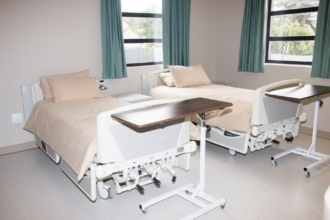Ways to get more hospice referrals
- Build personal relationships with referring physicians
- Find an opportunity to talk to physicians in person
- Identify the best referral sources with data
- Clarify your value proposition
- Make the referral process easy and obstacle-free
- Streamline your internal processes
- Use hospice management tools to stay organized
- Enable a multimedia marketing strategy
The hospice industry provides an important service, and it’s a sector that’s growing each year. Due to a growing geriatric population and a rise in chronic and age-related illnesses, the size of the hospice market is expected to grow at a compound annual rate of 8.2 percent each year until 2030.
However, just because the industry itself is growing, there’s no guarantee that any individual hospice care facility will succeed. The hospice industry is competitive, with each facility vying for referrals from a limited pool of local medical professionals. Learn how to get more hospice referrals for your business with the following strategies.
How to get more hospice referrals
Build personal relationships with referring physicians
Physicians make the majority of referrals to a hospice business, so it’s important to be on their radar. If you want to increase the number of referrals you’re getting, you need to develop a personalized strategy for each lead in order to make a good impression.
To do this, learn which pain points the physician encounters when they’re looking for hospice care for their patients. Are there particular areas of care they’re concerned about, or are there specific data points that matter more? Having this information can help you create a more personalized pitch that grabs physicians’ attention and speaks directly to their patients’ needs.
Jim Palazzo, CEO and founder of Transitions Care, a palliative care and hospice service provider, emphasizes the importance of building relationships and trust. “Deciding on an end-of-life provider is not an easy decision,” he says. “And no matter how much better equipped your agency is, if your patient or source doesn’t trust your brand, they won’t be willing to choose you.”
Find an opportunity to talk to physicians in person
Medical professionals are busy, so getting face-to-face time with them isn’t going to be easy. As much as possible, try to make any interactions with referring physicians simple and convenient for them.
For example, speak with the clinic manager to find out the best time to speak with the referring physician or a staff member. Often, this is early in the morning or around lunch time. Offering to bring in coffee or sandwiches for the team to build goodwill.
“Know the office staff,” says Palazzo. “Who makes the referrals? Build relationships with all the main players in the office and know their roles.”
Identify the best referral sources with data
A hospice may receive referrals from several different physicians, and it’s important to know which ones are providing the most leads. For example, while there may be dozens of physicians referring patients to a specific facility, that facility may receive 75 percent of its referrals from just a handful of physicians.
Having this data will help you create a strategy to further develop those relationships. Without this information, you may put the same amount of effort into each physician relationship — and that may not be very fruitful if the majority of the physicians don’t send a lot of referrals to your business.
However, with data in hand, you can strategically use your resources to foster stronger relationships with the physicians who bring you the most patients. If you want to increase the number of referrals from the other physicians, then it’s a good idea to increase your networking efforts with them.
Clarify your value proposition
Physicians have to choose between many different hospice businesses to make a referral, so it’s important to clarify your value proposition in your marketing materials.
What makes your hospice stand out from others in the same area? Do you have a particular expertise in hospice and palliative care that others don’t, or does your hospice have an above-average family satisfaction score? Is your hospice in a central location that’s easy for families to access, or do your hospice staff members travel to the patient’s home or assisted living facility?
Your message must be clear and engaging as well as expertly written. Work with professional copywriters to create your value proposition and develop marketing materials that will capture your target audience’s attention.
Make the referral process easy and obstacle-free
Ensure you have standardized hospice referral processes for all hospice liaisons. Use automated referral software that is standard in the industry and used by the physicians you want to build relationships with. Also, automate as many referral processes as possible, such as sending out reminders for signatures.
Removing obstacles ensures that physicians and their staff will be able to make referrals simply and easily, which will hopefully encourage them to send more referrals your way. If people have to struggle with outdated technology or systems that don’t work well together, they’re more likely to turn to a different hospice business instead.
Streamline your internal processes
In addition to making the referral process easy for physicians, it’s also important to make the process easy for your own internal staff.
For example, are there multiple people in your organization who are working on facilitating referrals? If so, are there any redundancies — such as two people working with the same physician at the same time — you can eliminate? Do certain staff members have relationships in specific hospital departments or areas that others don’t? Are there ways they can use their connections to benefit the hospice?
Streamlining your internal processes will ensure your resources are properly distributed and that your business is efficiently working to increase referrals in a strategic manner. It also helps if your staff is familiar with their target audience.
“Make it easy for [physicians] to learn why they should choose you,” advises Palazzo. “Show them; don’t just tell them.”
Use hospice management tools to stay organized
The right technology can make the outreach process easier and more organized. A customer relationship management tool or hospice management tool can help you keep organized, ongoing records of your business development with each physician, allowing you to track when you last engaged with them, how the conversation went, and what your next steps will be.
It can be difficult to track all these details manually, especially if there are multiple people working on referrals. When you use hospice management tools, you ensure everyone is on the same page and create a smooth process for your outreach efforts. Jotform Enterprise for hospice is a great solution that hospice businesses can use to manage physician referrals as well as other aspects of their operations.
Enable a multimedia marketing strategy
Nearly every resource that explains how to get more hospice referrals from physicians mentions networking. Networking is essential to building a referral pipeline, but it requires the support of other types of marketing to be successful.
For face-to-face meetings with physicians, you’ll likely need printed materials to share — such as brochures, flyers, and reports. They and their staff may also like to keep printed materials in their office to hand out to patients.
Additionally, patients and their families often research hospices online, so it’s crucial to have a website, a blog, and a social media presence. Medical staff who are part of the interdisciplinary team may also research the hospice online. Palazzo notes that hospices should offer “anything that will assist with questions and provide information.”
This type of multimedia marketing strategy ensures you’re sharing your message wherever your target audience is, enabling them to learn about your hospice and what makes you unique. In all of your marketing materials, be sure to have a call to action that encourages people to contact the hospice for more information.


















Send Comment: